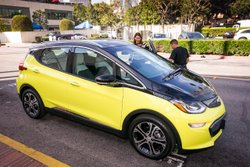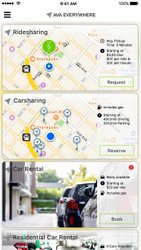Turning Scarce Resources into New Business Opportunities
The on-demand convenience of ridesharing and ride hailing services has already made a dramatic impact on the transportation landscape. Public transit ridership is down.


Property sales in far-flung subway-less neighborhoods outside NYC are up. Manhattanites are choosing to share a Lyft with total strangers rather than walk a few blocks in the rain. The result? More urban area dwellers—especially millennials—are choosing to skip the car-owning experience altogether.
But ridesharing isn’t for everyone. For those on limited income or traveling long distances on a regular basis, the cost of an Uber or a Lyft is out of reach. Because (let’s face it) ridesharing is pretty inefficient. For every ride, you have an extra person—and that person needs to be paid. That’s where car sharing comes in. What if you could offer the same flexibility and convenience at a much lower cost?
Car Sharing Innovators
Car sharing innovators are creating new value in the mobility space: making scarce resources more efficient. The station-based car sharing model best serves neighborhoods where people need to run errands and can easily return the car to the same location. Vehicles in these setups are typically used between 12 percent and 15

percent of the time, making them considerably more efficient than private vehicles, which have a 4 percent utilization rate. The free-floating car sharing model goes further, adding the convenience of one-way transport at a much more affordable cost than a ridesharing service. Utilization goes up as well: Free-floating cars are on the road between 15-to-18 percent of the time.
That’s just the beginning. As car sharing attains critical mass, it’s estimated that one vehicle can take between 7 to 11 vehicles out of a metro area. (Imagine Los Angeles with less than 1 million cars instead of 6 million.)
More Environmental Benefits
The car sharing model offers an additional environmental benefit. Drivers can choose the lowest-impact vehicle for each trip. They can drive a fuel-efficient compact around town—and still take an SUV for the once-a-year camping trip or drive a pickup to Home Depot. And because car sharing fleets will always be newer and better maintained than the average privately owned car (and more likely to be electric), the impact of any of those vehicles will be lighter on the planet.

Of course, the greatest efficiencies will be realized when one car can do both car sharing and ridesharing. A model where the vehicle is available for car sharing during the day, switches to ridesharing in the evening (after cocktails), and goes on delivery errands at night (when there’s no traffic) would offer transformational utilization rates. In fact, in a perfect world, the car might be busy day and night.
But the true revolution will come when we get to autonomous vehicles. Consumers will enjoy the best of both ride/car sharing. By taking the driver out of the equation, they’ll have the privacy and low cost of car sharing and the door-to-door service of ridesharing—without ever having to take the wheel or interact with a driver. Autonomous car sharing will also drive the design of new types of cars: vehicles that provide carpooling strangers with a degree of privacy, vehicles that carry passengers by day and transport goods by night, and the right-size car for every transport need.
Related Stories You Might Enjoy:
Top 10 Car Sharing Programs
News: Is Ride Sharing Eco-Friendly?
News: Ford Emobility Moves the Company into New Territory
News: What You Need to Know About Smart Mobility
News: Safer and Self-Driving Cars Now on the Road

6 thoughts on “Car Sharing—Revolutions Are Coming; Some Are Already Here”